The Reflection of the Quotidian
17/12/2019
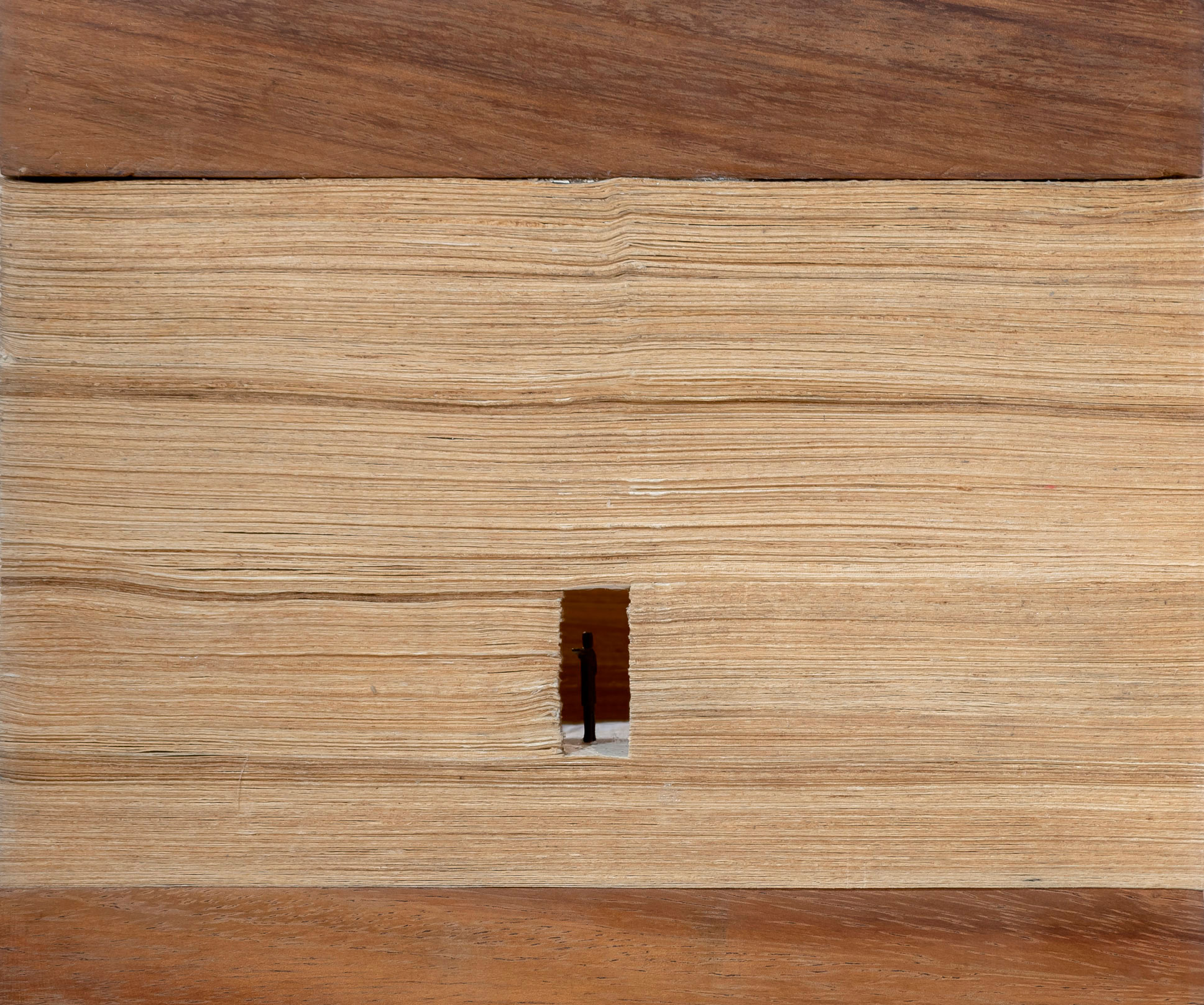
-Ecphrasis, “the literary exercise that consists of describing an art object”. The ecphrasis is not necessarily limited to the descriptive modality, but can be done by adopting other disciplines. Inverse ecphrasis is the visual representation of a literary spatial description.
We were entrusted with the task of reading, in our case, the work of Eliseo Diego (cuba-1993) and producing a visual representation, which could be translated into various forms of expression close to architecture (plans, graphics, models, diagrams, etc)
-We knew something of Eliseo Diego’s work, but it was very enriching to deepen into his world, studying it, and finding those singularities that allowed us to put together a common thread.
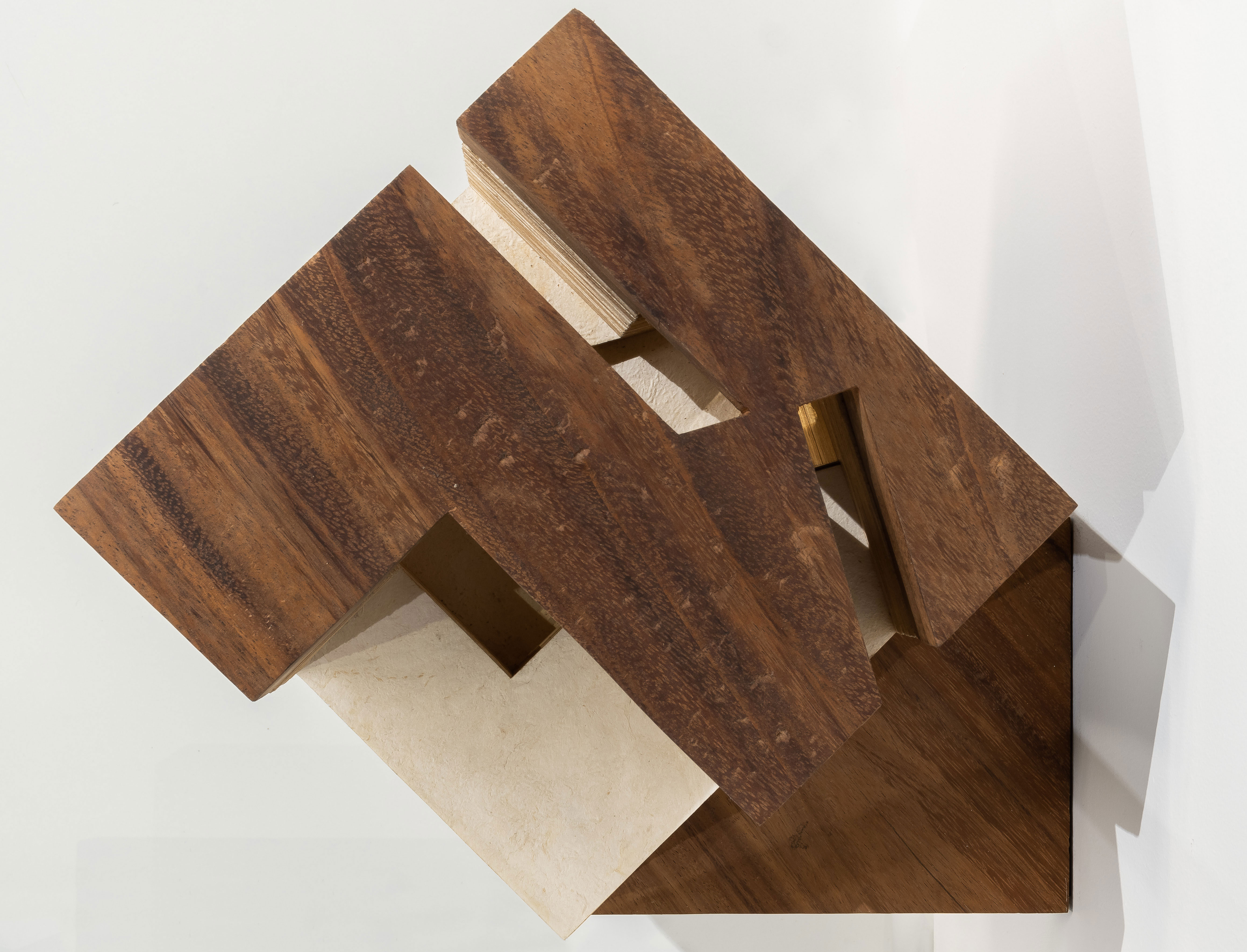
“Through my mirror”, “inventory of amazes”, “daydreaming”, “I have lived here”, are some of the many poetry books in which Eliseo Diego reflects the spirit of his works through experiences and concerns that help discover the world around us in its fair value.
This small 25×25 piece is not intended to be more than a piece of his work, translated into an abstract geometry that, due to the way it was placed embedded in a box constructed of thin layers of paper and solid wood, allowed different points of perception, but a single reading necessary to discover or “realize” the author’s message:” Reading is like living: one is in danger of reaching the end and not knowing what it was about… ”
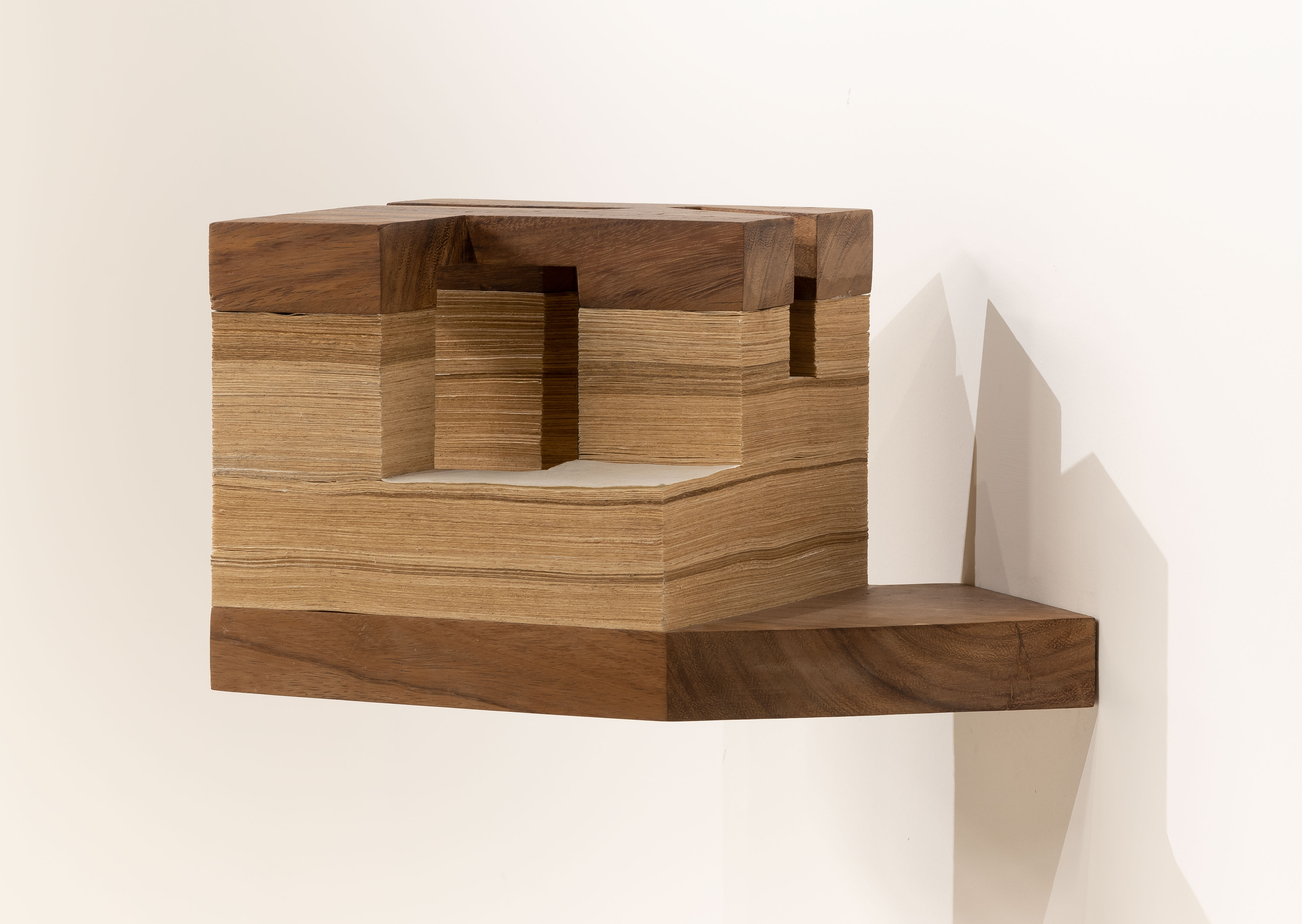
– Just as the mind of an architect can be seen with his constructed works, the mind of Eliseo Diego is seen through paper; This is why we have decided that the materiality of the work is mainly produced from paper, stacked sheet of a natural fiber recycled paper. In addition to conserving the materials that a writer has in his daily work, the value of paper is measured by what is left on it. It is the medium where writers manage to transcend time.
Wood represents the binding and desire to safely preserve all the legacy he left for us. The size of the piece and the holes were designed to invite observers to get closer not only to see through them, but to enter the time when it is made through your senses, to such a degree that you could even perceive the smell of paper. When you take a book and smell it, you understand the time …
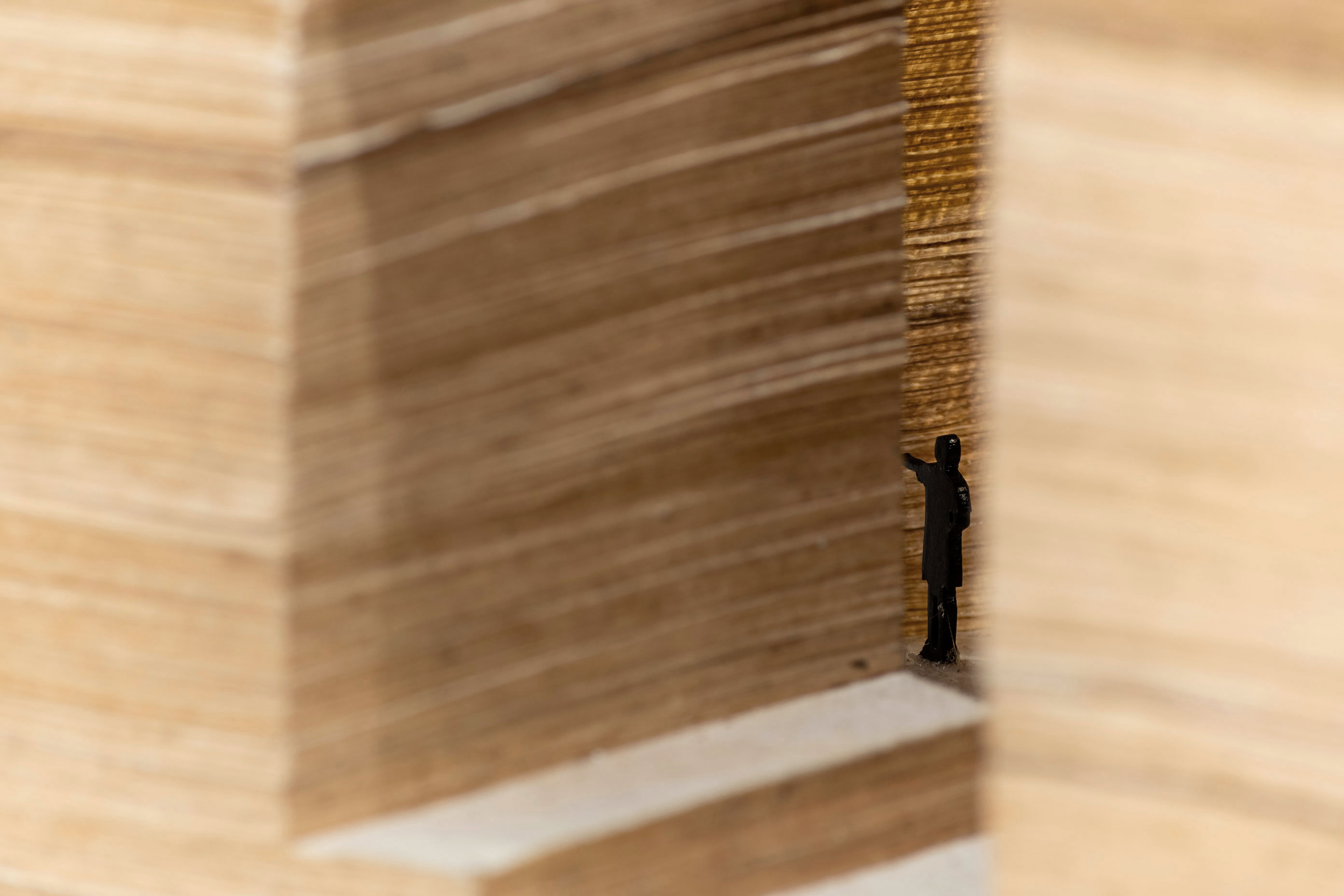
The piece has this small hollow a “childhood window” that showed that he is looking for this feeling of surprise so present in his work,
The other gaps, such as this “big window of solitude” come to trap us within its content, in the same way that Eliseo Diego surrounds us with his work because in life there are more years of solitude than the company to which childhood memories are linked.
– Through the poems of Eliseo Diego the ingredient of the temporal is very clearly perceived. The cube represents the time and space to which man is tied.
The perforated cube represents this fragmented time.
– In addition to the paper, the reflection is something that is always present.
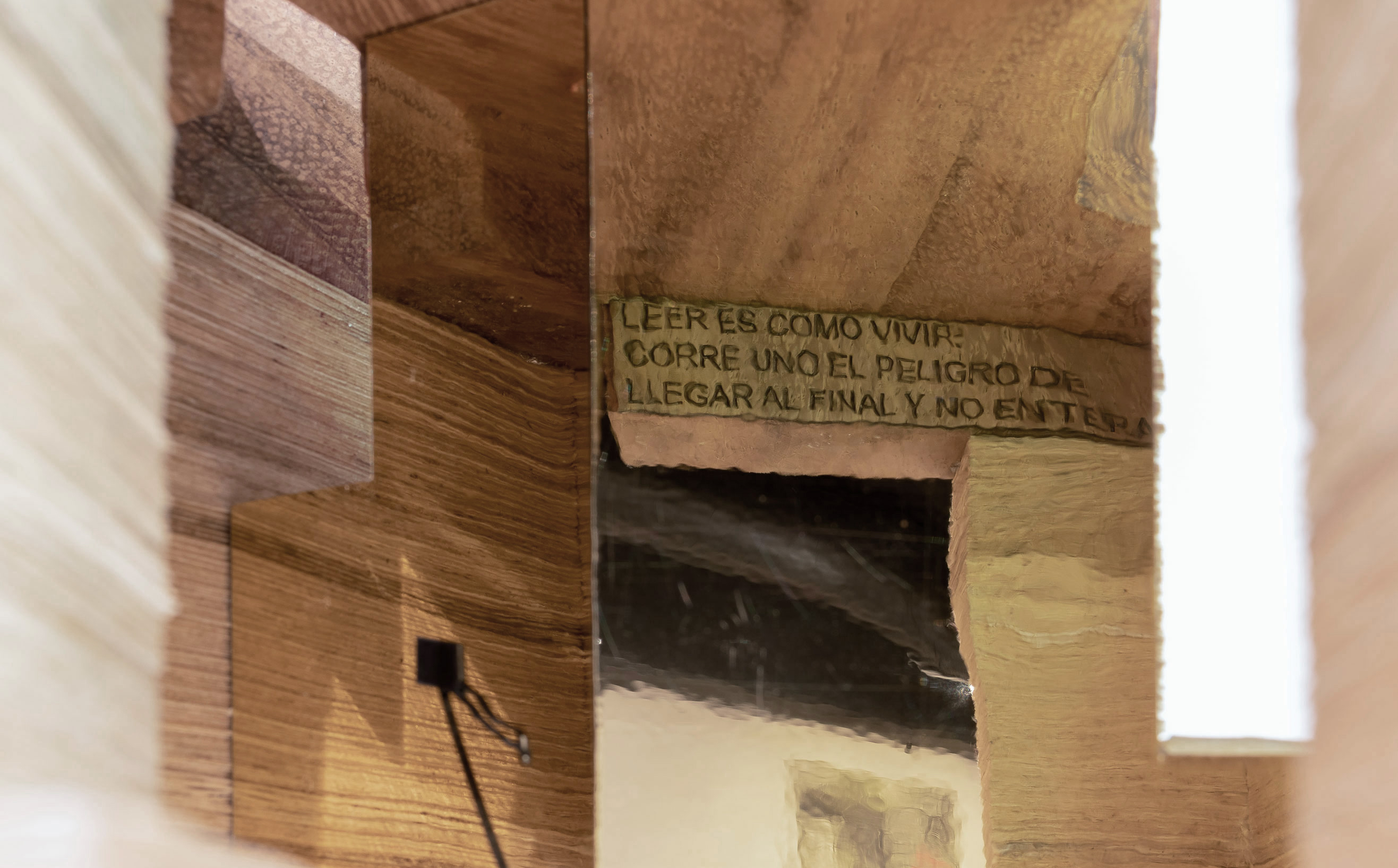 The function of the mirror is none other than to be just another window, which adds or multiplies other poetic vanishing points of the environments that Eliseo Diego generates through his own fantastic poems and stories.
The function of the mirror is none other than to be just another window, which adds or multiplies other poetic vanishing points of the environments that Eliseo Diego generates through his own fantastic poems and stories.

Authors: Mara Partida, Héctor Mendoza and Álvaro Gutiérrez
Type of piece: Art Object
Technique: mixed, (solid parota wood, laser cut amate paper, reflective gold foil, 3D printing of furniture pieces and acetate printing
Dimension: 250 x 250 x 350mm
Photographs by Sebastian Anaya
